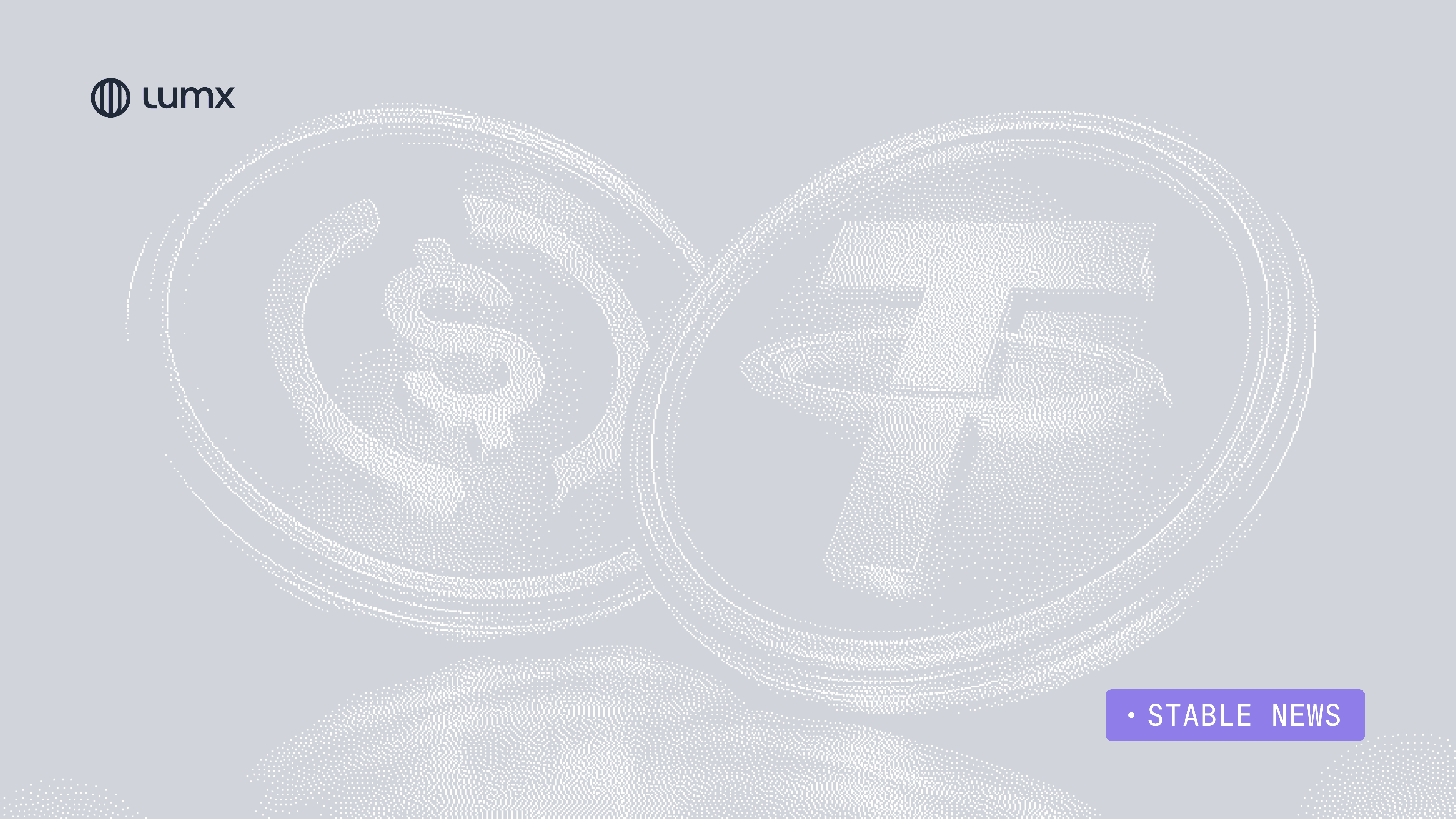Over the past five years, stablecoins have moved from being seen as marginal experiments in the crypto universe to becoming central players in a global-scale financial transformation. This shift is especially visible in Latin America, where economies historically marked by currency instability, persistent inflation, and barriers to traditional banking access have found in stablecoins a practical solution to longstanding problems. This is not just about technology: stablecoins address real regional pain points, functioning simultaneously as a store of value, a payment method, a treasury tool, and an alternative to costly and slow international settlement systems.
Recent studies confirm this paradigm shift. The report Stablecoin Payments: The Trillion Dollar Opportunity, published by Keyrock in partnership with Bitso, projects that by 2030 stablecoin-based payments will surpass $1 trillion annually, representing about 12% of all international flows. In other words, in less than a decade, a significant portion of cross-border money could be moving on blockchains, settled in seconds, at lower costs, and with far greater predictability than traditional infrastructures like SWIFT can offer.
Latin America is emerging as one of the epicenters of this movement. According to The Money Layer: LATAM Crypto 2025 Report by Dune, over 90% of all volume transacted on regional exchanges by mid-2025 was conducted in stablecoins, with USDT and USDC leading. The message is clear: in the region, stablecoins are no longer peripheral alternatives — they are the central engine of the digital economy.
Corporate adoption: from treasury to B2B payments
Although stablecoins first reached individuals seeking protection against local currency depreciation, the most transformative shift in the past two years has been their consolidation as a corporate tool. The report Stablecoins Landscape in Latin America – First Half of 2025 by Bitso Business shows that companies are now incorporating stablecoins into treasury management, instant FX, B2B payments, and price arbitrage across jurisdictions.
The numbers speak for themselves. Between late 2024 and mid-2025, stablecoins’ share of total volume processed by Bitso Business doubled. During that same period, segments like payment aggregators and gaming companies massively increased usage. Aggregators grew 68% in clients served, while digital gaming companies expanded their use of stablecoins for international pay-ins and pay-outs more than fivefold. These cases show the appeal goes beyond cutting operational costs — it’s about enabling global scale without multiple local banking integrations.
Another key finding from Bitso’s report: by 2025, treasury, FX, and arbitrage transactions surpassed remittances, representing 45% of all processed volume. The takeaway is clear: stablecoins have moved from being mainly a peer-to-peer money transfer tool to becoming a strategic part of corporate finance. Companies can now hold digital dollar liquidity, hedge against local currency shocks, and move significant amounts in seconds — without the delays and high costs of traditional banks.
This wave of corporate adoption has a systemic effect: the more companies use stablecoins in daily operations, the more deeply they embed into global value chains. Stablecoins are no longer an add-on; they are infrastructure reshaping the competitiveness of Latin American firms on the global stage.
Exchanges and rising volumes: numbers that Impress
If one metric illustrates the maturity of the Latin American stablecoin market, it’s the growth in exchange volumes. According to Dune’s The Money Layer: LATAM Crypto 2025 Report, the leap has been remarkable: in 2021, annual volume hovered around $3 billion. By 2024, that figure had reached $27 billion, a ninefold increase in just three years. Bitso alone accounted for more than $25 billion, representing a staggering 1,100%+ growth in four years.
The 2025 data confirms this is no passing trend. By July that year, regional exchanges had already processed more than $11 billion, with over 90% of transactions in stablecoins like USDT and USDC. Even after the broader crypto hype cooled, stablecoin usage not only held strong but consolidated as the market standard. This signals maturity: less speculation in volatile assets, more pragmatic use of financial tools that deliver stability and efficiency.
This growth is not limited to major markets. Colombia and Argentina also recorded consistent increases in stablecoin participation, each rising two percentage points between 2024 and 2025. While still behind Mexico and Brazil, these markets confirm adoption is spreading in a structured way across the region.
Local stablecoins: the boom of the real and Mexican peso
One of the most fascinating trends highlighted in the reports is the growth of local currency-pegged stablecoins. While the market initially revolved around dollar-pegged tokens like USDT and USDC, starting in 2023 and 2024, initiatives pegged to national currencies, particularly the Brazilian real and Mexican peso, gained traction.
Brazil may be the most emblematic case. In 2021, volumes in BRL-pegged stablecoins were modest, just above R$110 million. By July 2025, that figure was nearing R$5 billion. User numbers tell the story even more clearly: from fewer than 800 to more than 90,000 in the same period. What was once a niche experiment is now mainstream, used daily by businesses and individuals alike.
Mexico shows a similar pattern. The MXNB token, pegged to the peso, grew nearly 300% in users between July 2024 and July 2025, reaching tens of thousands of monthly transactions. Another local initiative, MXNe, hit a record 637 million pesos in a single month, with an average transaction size near 300,000 pesos, clear evidence that institutions and large companies are now using these assets for large-scale operations.
These numbers point to the formation of a hybrid ecosystem, where dollar-pegged and local stablecoins coexist and interoperate with traditional payment systems. Practically, this gives companies flexibility to choose the best currency for each transaction, cutting FX costs and improving predictability of international flows.
Regulation: the case of Brazil
The rise of stablecoins in Latin America inevitably calls for regulatory adaptation. In Brazil, the Central Bank has taken the lead, launching public consultations specifically to discuss the treatment of virtual assets, including stablecoins. This signals not just a desire to monitor the sector, but to lay the groundwork for stable integration between technological innovation and the traditional financial system.
The consultation process, started in 2024 and extended into 2025, covered topics such as supervision of virtual asset service providers and the conditions under which stablecoins should operate within the country’s FX framework. While no definitive rules exist yet, the process demonstrates the regulator’s openness to engage with companies, industry associations, and society at large.
The Central Bank has positioned itself as a facilitator of this transition, acknowledging stablecoins’ relevance for payments, remittances, and corporate operations, while also working to ensure transparency and safety for users and institutions. Clearer regulatory outcomes are expected by the end of 2025.
Strategic implications for companies and financial institutions
Stablecoin adoption in Latin America is no longer a technological curiosity. The 2025 reports reveal a structural shift in how value moves across and beyond the region. For businesses and financial institutions, the implications go far beyond operational efficiency.
First, international competitiveness. A company relying solely on legacy systems for cross-border payments faces delays of up to three business days and costs that can wipe out profit margins. By integrating stablecoins into its flows, that same company can cut costs by over 80% and settle transactions in seconds, creating a tangible competitive edge.
Second, FX risk management. In markets like Argentina or Colombia, local currency volatility undermines any medium-term planning. By holding part of their treasury in dollar-backed or local-currency stablecoins, companies can protect cash reserves, reduce exposure to macro shocks, and gain flexibility to operate across jurisdictions.
For traditional financial institutions, the rise of stablecoins is also an opportunity. Far from replacing banks, these assets can complement infrastructure, enabling new services like instant settlement, multi-currency digital wallets, and direct integration with global payment systems. It’s no coincidence that exchanges, fintechs, and banks are now competing to build this new financial layer.
Outlook to 2030
If the current picture is striking, the near future promises even more transformation. The report Stablecoin Payments: The Trillion Dollar Opportunity estimates that by the end of the decade, stablecoins could account for 12% of all international payments, moving over $1 trillion annually. That would mean building, in under ten years, a parallel payment infrastructure on par with systems that took decades to establish.
For Latin America, this is especially relevant. The region already ranks among the world’s top crypto adopters, not out of hype, but out of necessity. The combination of chronic inflation, high remittance costs, and widespread smartphone penetration creates the perfect environment for stablecoins not just to thrive, but to become standard.
Another growth driver is regulatory evolution. As countries like Brazil and Mexico advance in defining clear rules, the barrier to entry for institutional players falls. This means not just startups or fintechs, but banks, investment funds, and large corporations will begin treating stablecoins as a natural part of financial strategy.
Finally, the rise of local stablecoins adds sophistication to the market. While the digital dollar dominates today, in a few years we could see reais and pesos circulating side by side, integrated into regional systems and interoperating with dollar-pegged tokens. This hybrid future not only boosts transaction efficiency but also reinforces regional monetary autonomy.
Lumx’s position in this transformation
It’s in this context that Lumx positions itself as a strategic partner for banks, fintechs, and payment providers. Our mission is to deliver the infrastructure that allows companies to integrate stablecoins into their financial flows efficiently, securely, and at scale.
With robust technology, we provide multi-currency digital accounts, intelligent fiat-to-stablecoin orchestration, instant settlement via API, and integration with both local and international payment rails. This means our clients can not only experiment with stablecoins but deploy them at scale, with enterprise-grade compliance and alignment to evolving regulations.
By connecting stablecoins to everyday operations, we help businesses cut costs, improve cash flow predictability, and expand globally. More than following a trend, we empower our partners to lead the transformation already underway in Latin America.
If your company wants to explore how stablecoin integration can enhance your operations, schedule a call with our team.
Sources
This article is based on the reports Stablecoins Landscape in Latin America – First Half of 2025 (Bitso Business), Stablecoin Payments: The Trillion Dollar Opportunity (Keyrock & Bitso), and The Money Layer: LATAM Crypto 2025 Report (Dune).





